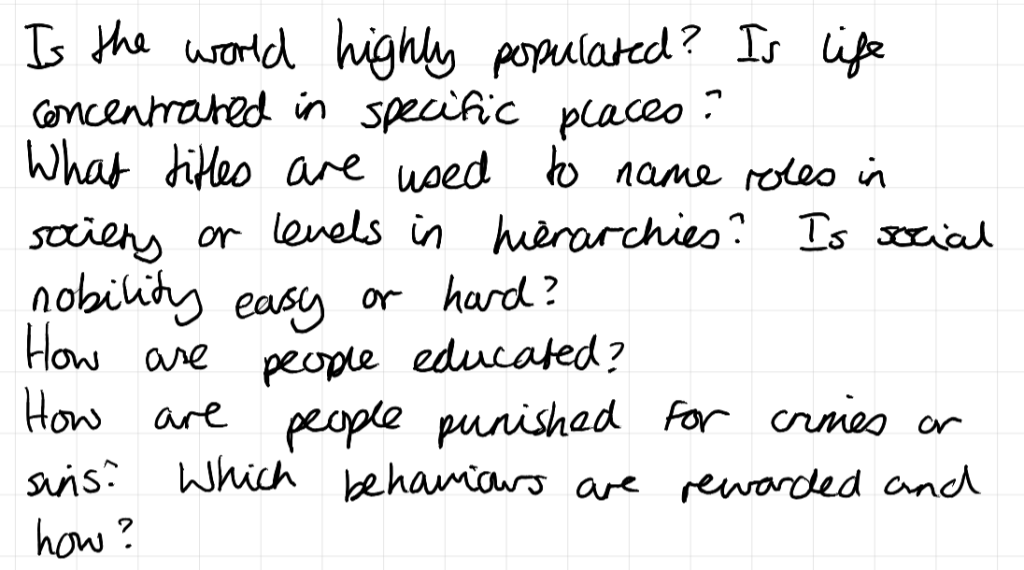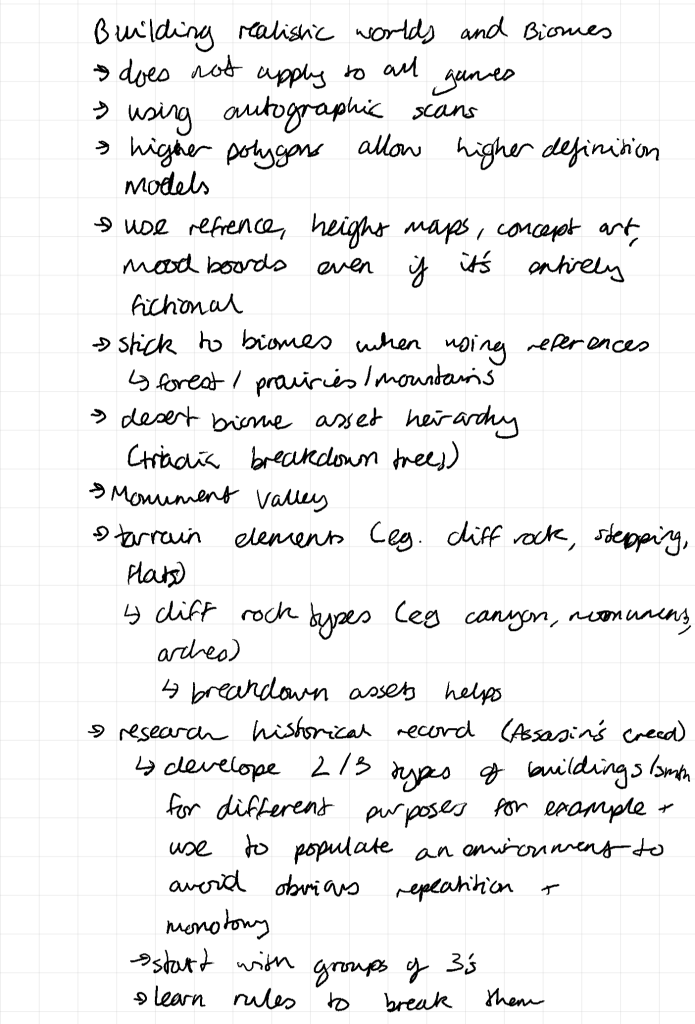Worldbuilding

Schell (2019, p. 369)
Successful Transmedia Work
Many very popular transmedia have a strong world behind it. These worlds are intuitive, allowing the creation of many stories within that world. This is common in media that becomes a big franchise, like The Lord of the Rings in Middle-earth and the world of Star Wars. While Schell (2019) argues that ‘This “it only makes sense if you enter through all the gateways” approach was intriguing for a few, but alienating from most.’ in reference to transmedia games that don’t stand in their own right but as an addition to the main work. Although this is an interesting point, I do not think that all games have to be made for the most amount of people – a niche, but dedicated, audience can be just as valuable as long as you understand that audience. A good world that players will want to play in is one that fulfils a players dreams or wishes, therefore the ideal gameworld one that understands what the player wants and is impacted by their actions.

Each aspect of a gameworld should interact with itself as well as the player.
In other media, like film, the world could be created scale models, like in True Lies (1994):
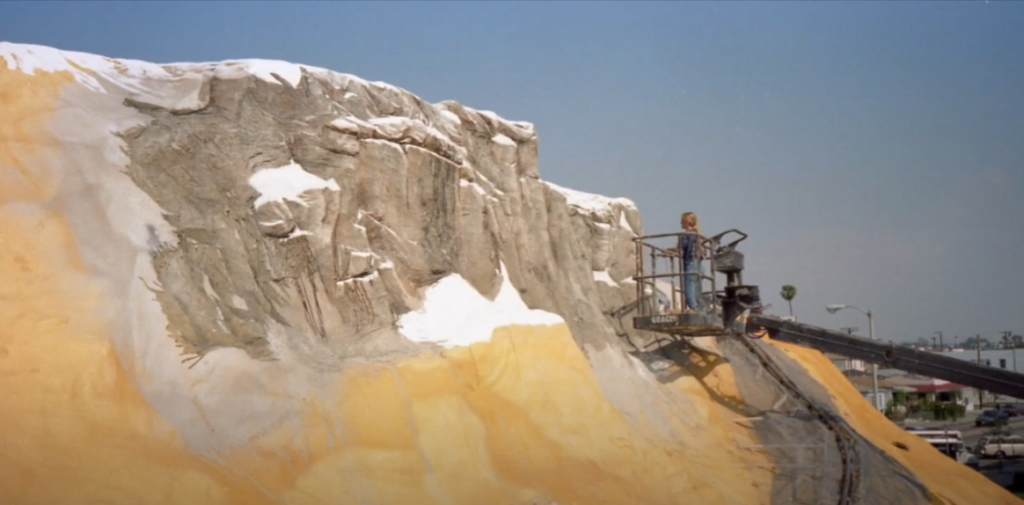
Most films today utilise CGI for the same effects, and create the illusion of a wider and immersive world, suggesting the existence of more without showing absolutely everything. I think that this balance is different in games, since especially in open world games like The Legend of Zelda: Breath of the Wild (2017). These games give the player freedom, while still showing them a convincing world. In games, a big part of making an immersive game is making a world that reacts to the player and interacts with them. Therefore, a gameworld should be based around its mechanics.
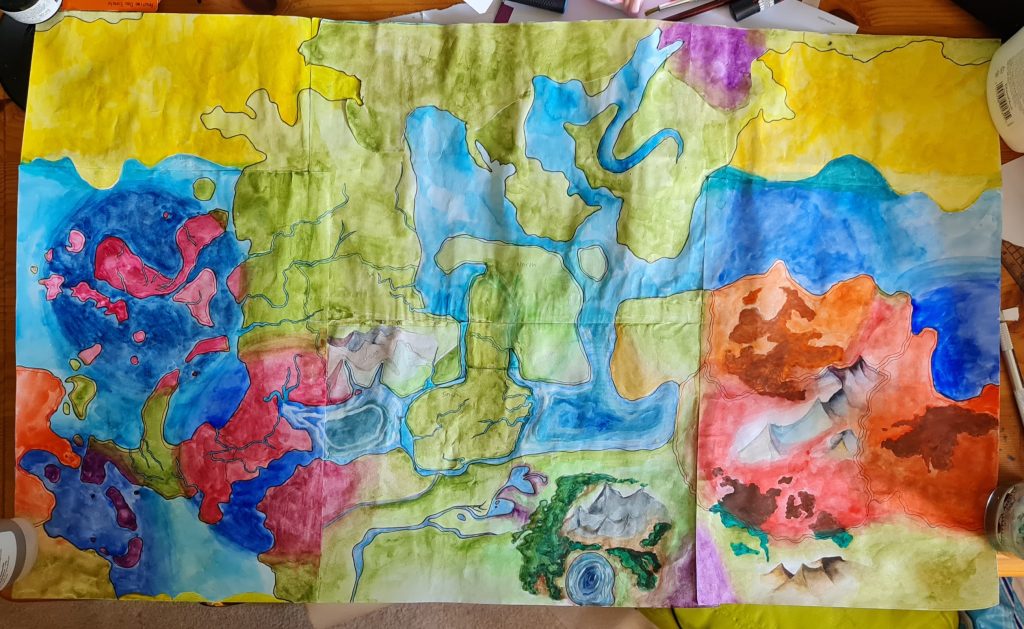
I decided to try and create a map based around four main different fantasy biomes, where there are the hot, red mountainous dragon lands, the waterlogged fairy lands and the green forested lands where the humans live. There is also a dangerous stretch of ocean that’s expanding, called the ‘Golden Stretch’ where large, ferocious creatures have mutated, creating fear and legends. The Golden Stretch is leeching into surrounding land, making it unliveable.
I refined the map digitally and named the different countries. I based the human (blue) lands on Germanic language.
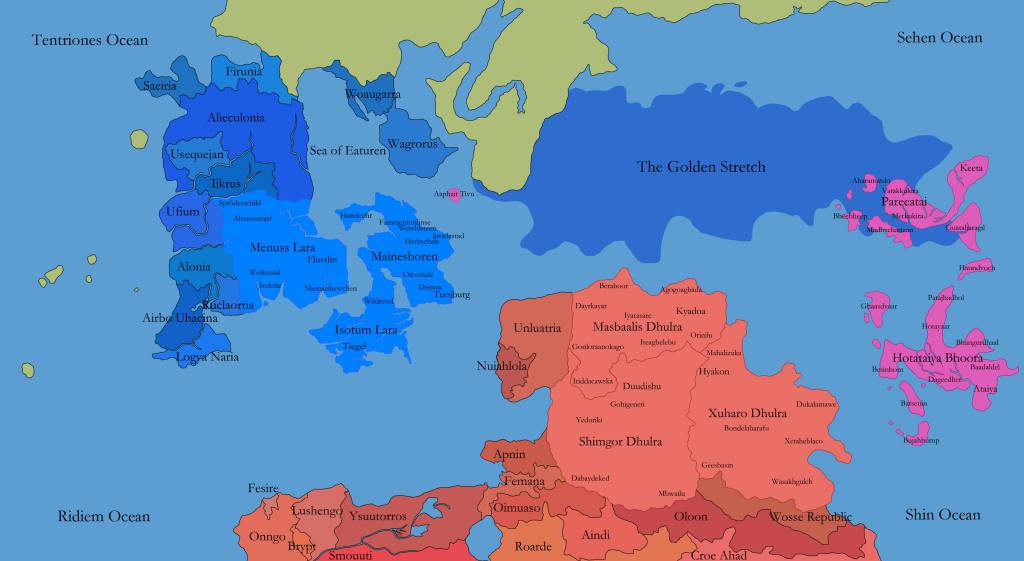
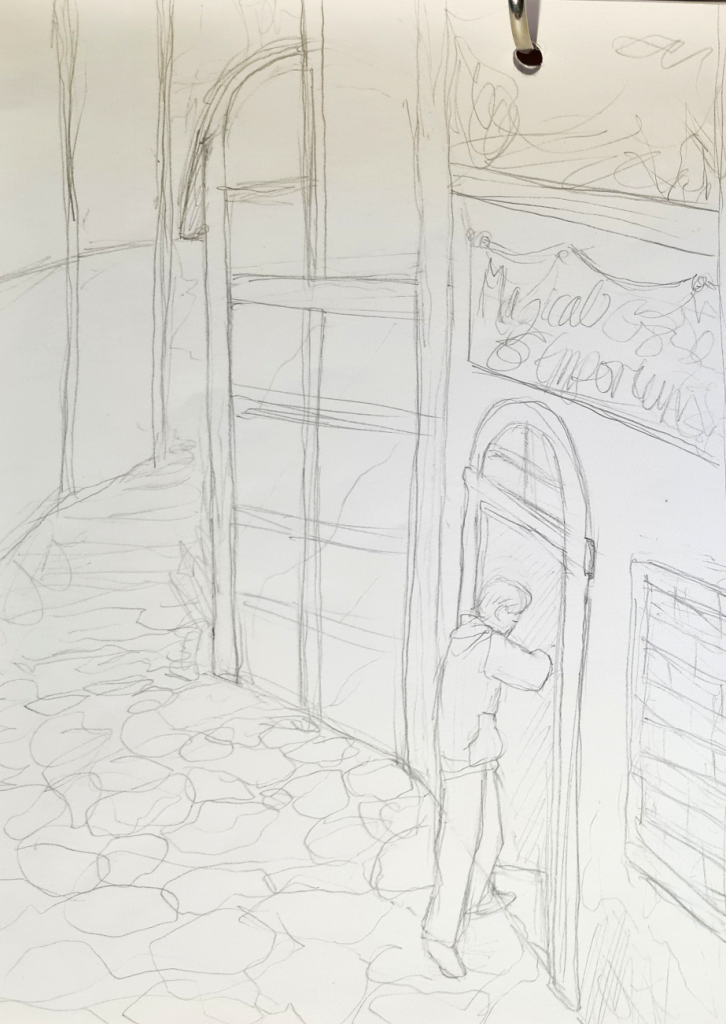
I decided to focus on Mainesboren, as it was central to the map, therefore I imagined that it would be akin to a cultural melting pot. The drawing above is a concept of a street in Mainesboren, being heavily inspired by cramped English Towns with cobbled streets and alleys. The small streets are really only appropriate for people rather than vehicles.
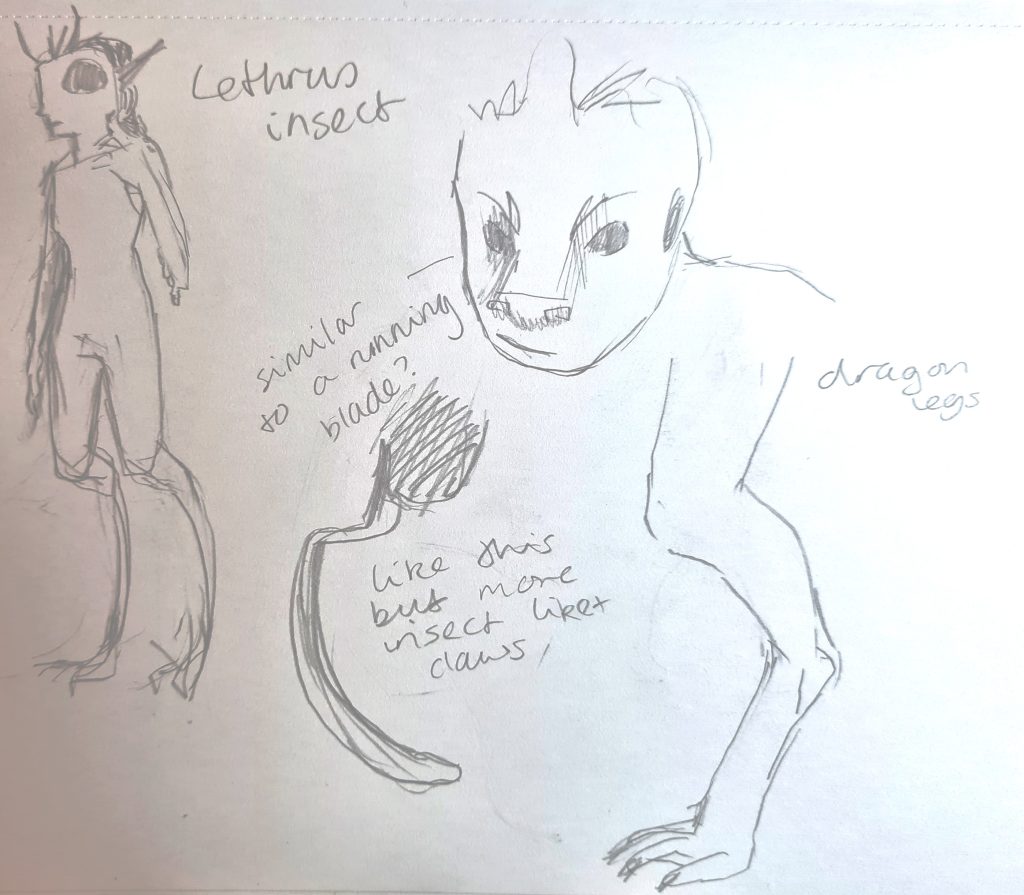
I decided that while dragons and fairies would both be humanoid to help make their designs more relatable, I did want to have distinct species specific features, like digitigrade legs (where the creature walks on its toes), a feature of animals that usually makes it faster. Fairies, being very small, have thinner, more insect-like legs. Dragons, being much larger, have much larger, muscled legs.
